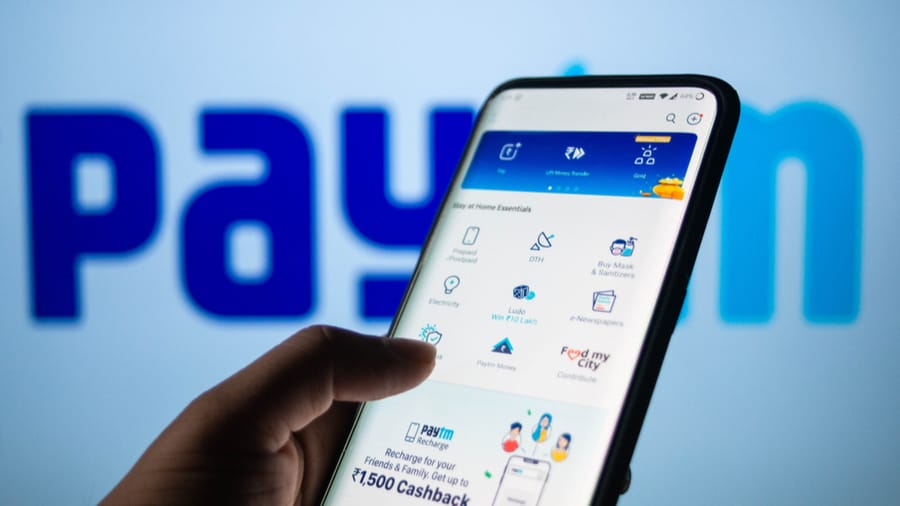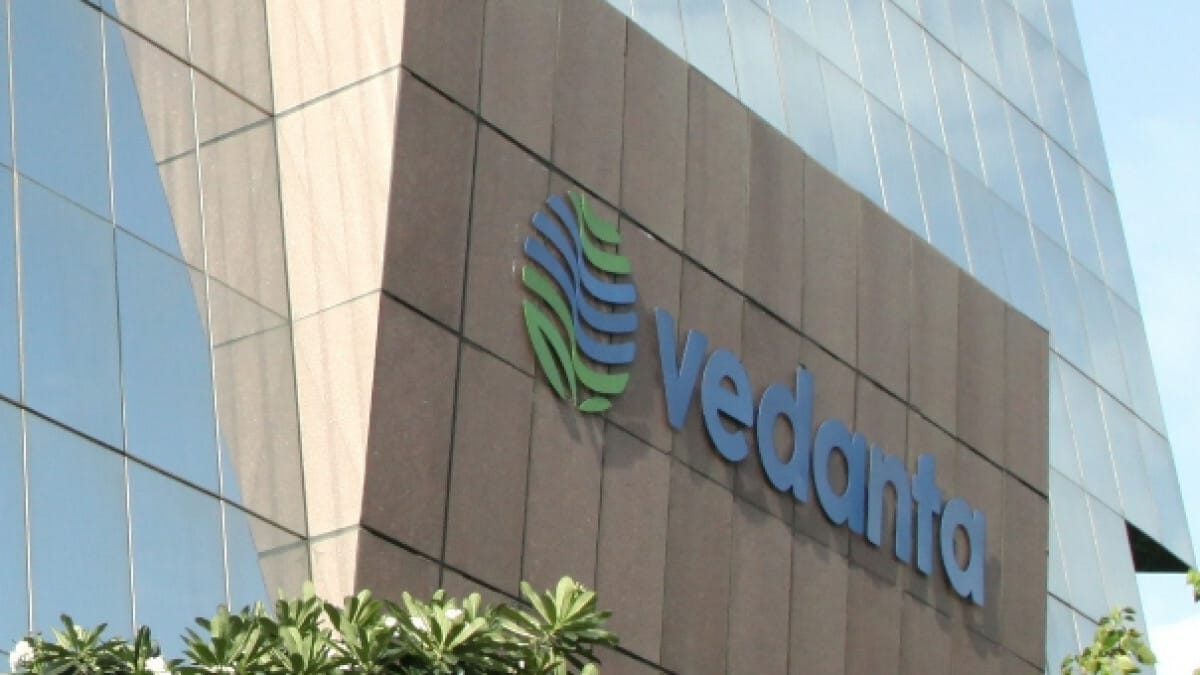- The FinOak
- Posts
- A wine stock that can make your portfolio high 🥴
A wine stock that can make your portfolio high 🥴
A wine stock that can make your portfolio high 🥴

Hello, FinOak readers! Welcome to our weekly newsletter. We hope that you are in good spirits and excited for the upcoming festivities.In this issue we will be covering some significant happenings in Finance Industry in our weekly wrap up column.In addition to that, we have clubbed some beginners’ friendly money management tips that you will find under the personal finance column to get you started with owning your money! Happy reading and learning!
Column 1
Weekly Wrap Up
In today’s Edition
Sula Vineyards’ IPO
Paytm buyback
$19 billion dollar plan with no backer
1.
Beer is made by men, wine by God

After a hectic day all you need is glass of wine!Sula Vineyards Limited is India’s largest wine producer and seller as of March 31, 2022. It has been a consistent market leader in the Indian wine industry in terms of sales volume and value.Sula is also recognised as the market leader across wine variants, including red, white, and sparkling wines. Sula’s business can be broadly classified under two categories,Wine Business: The production of wine, the import of wines and spirits, and the distribution of wines and spirits.Wine tourism: The sale of services from ownership and operation of wine tourism venues, including vineyard resorts and tasting rooms.Currently, it produces 56 different labels of wine at four owned and two leased production facilities located in the Indian states of Maharashtra and Karnataka. Sula is the pioneer of wine tourism in India with many firsts to its credit, such as the first wine tasting room in India, the first vineyard resort, the first wine music festival and the first winery tours at its facility in Nashik, Maharashtra
Sula Vineyards IPO detailsThe issue was opened for subscription from 12 December to 14 December 2022. The company will be listed on both NSE and BSE on Dec 22, 2022.
According to NSE’s latest data, the public issue is subscribed 2.33 times of original offering.
The shares reserved for individual retail investors were 1.65 times subscribed, while the same for non-institutional investors and qualified institutional investors were 1.51 and 4.13 times respectively.In the IPO, the offer for sale will be up to 26,900,530 equity shares (including 8070158 equity shares for *Anchor allocation) at a price band of Rs 340 per share and Rs 357 per share. At the upper price band, Sula’s IPO is valued around Rs.960.35 crores.
Grey market Premium: Shares of Sula Vineyards Ltd are available at a premium of ₹17 in the grey market as on 14/12/22.
Now, if you feel you want to invest in Sula Vineyards then consider the following factors to make a decision
Sula Vineyards Financial summary
1. The Company’s Revenue from operations has seen a negative CAGR of 9.54% from FY20-22. Its Wine business has seen a negative CAGR of 5.46% for FY 20-22.But, this negative CAGR is driven by a hit on their sales of wine imported by them and their distribution business whose revenue fell from 161.5 cr in 2020 to 35.7 cr in 2022 (They should not forget that during this time international trade was minimal due to Covid).
2. However, during the same time, their revenue from their own brand and revenue from wine tourism increased by CAGR 4.72% and 7.11% respectively.
3. The company’s Gross margin has increased from 48% to 65% and EBITDA ( Earning before Interest, Tax, Dividend, and Amortisation) has increased from 9.68% to 25.57% during FY20-22.
4. In FY 21-22 The company earned a profit of Rs 52.1 crores which is a significant increase from FY19-20 and FY 20-21 where profit after tax stood at Rs (15.9) crores and Rs 3.0 crores respectively.
Market Sentiment1. In its IPO note, Reliance Securities said, "Based on FY22 earnings, the company is valued at 57.7x P/E (the dollar amount an investor can expect to invest in a company in order to receive $1 of that company’s earnings. High P/E either means that the stock is overvalued. But this is done with comparison to other stocks in the same segment), 28.4x EV/EBITDA (It is a valuation multiple that tells how many times enterprise value is against the company's cash earning), and 7.1x EV/ Sales (a valuation measure that compares the enterprise value (EV) of a company to its annual sales). The company has a strong presence across India, and 20 countries including Spain, France, Japan, the UK, and the US and it will also continue to expand Wine tourism.2. Motilal Oswal and ICICI Direct held different opinions. Motilal Oswal believes investors can subscribe to Sula Vineyards IPO for listing gains.In its report, Motilal said, "Sula has market leadership in India’s grape wine industry, especially in premium brands. It enjoys high entry barriers and is well-placed to capture industry growth. We like its focus on D2C model, premiumization, and efforts on improving its operational efficiencies. The IPO is valued at P/E of 49x 1HFY23 (First half of Fiscal year) annualised EPS. Given, the first-of-its-kind listing in the wine category, there could be fancy for the IPO. We suggest investors can Subscribe for listing gains."
Company’s Strengths and Risk Factors
Strengths
High barriers of entry
Established market leader in the Indian wine industry with the leading brand “Sula”
Largest wine producer in India with the widest and most innovative product offering supported by an efficient production mechanism
Largest wine distribution network and sales presence
Secured supply of raw materials with long-term contracts exclusive to Sula
Leader and pioneer of the wine tourism business in India
Risk Factors
The industry is subject to a licensing and excise regime with changing laws, rules and regulations, and legal uncertainties, including the adverse application of corporate and tax laws
Reduction and elimination of import duties on international wines in India
Adverse climatic conditions impacting the quality of wine grapes
Any disruption in the supply of raw material
Failure to adapt its product offerings to changing market trends and consumer tastes, preferences and spending habits
*Anchor investors are institutions that are allotted shares at a fixed price before the IPO opens to the public. Each investor is required to invest at least Rs 10 crore and the funds are subject to a 30-day lock-in period. Investment by anchor investors ahead of the IPO creates a buzz among retail investors. It is generally seen as a confidence booster as institutions make researched investment decisions.)
2.
India’s best short seller sold at Rs. 2150 and will buy at Rs. 810

Yes, you heard it right! And this short seller is none other than Paytm’s parent company One97 Communications Ltd.
The company’s board on Tuesday (13/12/2022) unanimously approved for the company’s buyback of shares worth up to Rs 850 crores through the open market.
The shares will be bought back at a maximum price of Rs 810 apiece, it said in a release. The maximum number of shares that will be bought back is 1.62% of the paid-up share capital of the company. (Paid-up share capital is the amount of capital a company raises against the sale of their shares in the primary market).
Since its listing date, the stock has plunged down by 66% from Rs 1564 ( 27% lower than the issue price) to Rs 529 per share. However, in the last five days, the time wherein the company announced that they are considering share buyback to the date of board approval, the share price of one97 communication has seen a surge of 3.69% (from Rs 510 to Rs 529).
Reasons for Share buyback
A company go for a share buyback for two main reasons:
Directly boost share prices: The main goal of any share repurchase program is to deliver a higher share price. The board may feel that the company’s shares are undervalued, making it a good time to buy them. Meanwhile, investors may perceive a buyback as an expression of confidence by the management.
Buybacks are a more tax-effective means of rewarding shareholders: Buybacks are attractive in tax terms even after considering the 10% tax on LTCG that was imposed in the 2018 budget. On the other hand Dividend payments by companies are subjected to post-tax appropriations, dividend distribution tax, and tax on shareholders.
This recent statement by the CEO of Paytm, Mr. Vijay Shekhar Sharma reflects the objective of buyback and management’s effort towards increasing long-term shareholder value.
“Over the last year, there is clear business momentum, and we are ahead of our plans. Looking at the monetization opportunities in our core payment and credit business, we feel confident to generate healthy revenues and cash flows to invest in sales, marketing, and technology. We value our shareholders and their journey with us in the public markets. I believe that a buyback at this stage will be immensely beneficial for our stakeholders and will drive long-term shareholder value.”
Paytm will have to use money from its books to repurchase the shares as Indian law prevents the firm from using the proceeds from the raise from the IPO for buybacks. In a statement earlier this Tuesday, Paytm said it maintains “surplus liquidity,” and has ensured that all its cash requirements have been “adequately budgeted.”
3.
$19 billion dollar plan with no backer

Vedanta’s billionaire chairman Anil Agarwal is struggling to find investors for a nearly $19 billion chip plant in India, Bloomberg reported citing sources.
Early in September, media houses were flooded with the news that Oil, gas and metal company, Vedanta Ltd. along with its joint-venture partner, Foxconn, a Taiwan based multinational contract electronic manufacturer were going to invest nearly $20 billion ( Rs 1.54 trillion) in Gujarat.
The venture is going to set up India’s first semiconductor fabrication plant - one to manufacture glass and the other to make semiconductor chips in Gujarat’s Dholera, according to the statement made by Rajeev Chandrasekhar, Union minister of state for electronics and information technology.
This same project is now again in the news because Anil Agarwal is struggling to find financial backers for this planned semiconductor factory, according to people familiar with the matter.
Agarwal’s representatives met with large funds from the Middle East, Singapore, and the US over the past three months to garner financing commitment for the manufacturing business. All the funds gave the opportunity a pass, leaving them with almost no backers for the project.
The investors to whom Agarwal pitched the plan raised concerns about the group’s limited experience in the sector and its stretched financial situation, they said.
The venture plans an initial investment of $ 2 billion for the plant that is expected to be set up in the next two years. The Indian govt. has also offered subsidies on land acquisition and will also offer additional subsidies amounting to half the cost for such investment under a production incentive plan.
Column 2
In today’s Edition
Before investing learn how to save
A provision that can help save you taxes
1.
Before investing learn how to save

In the last 2-3 years, especially after the covid pandemic, people have become more inclined towards managing their money.
The buzz of talking and working on passive income, and developing new income streams can be particularly seen in millennials and GenZ due to the recent rise of Finfluencers.
However, no one tells you how to first arrange for the funds before devising an investment strategy which is only possible if they save a part of their active income.
So, let’s see how we can budget our active income stream so that we can achieve dual goals i.e,
i. Providing for our needs and wants, and
ii. Set aside a part of your income to save and invest.
Steps to create a budget
Calculate your net income
This is the first step towards budgeting. It includes netting your income (salary, fees, profit, etc) with taxes, deductions, and insurance. Netting is important because failing to do so will give you a false illusion that you have more to spend than your disposable income.
Track your spending
Once you know how much money is coming in, you then need to figure out where it is going. Observe how much you are spending on your necessities/or compulsory fixed payments like rent, electricity, LPG/IGL connections, laundry, etc. and how much variable expenses are done by you like credit card expenses, groceries, shopping, entertainment, dining, etc.Once you know where your money is going, then it becomes easy to ascertain where you have to cut down your expenses.
Set realistic goals
Your end goals serve as the ultimate motivation and reason as to why you are saving. These goals will help you to stick to a budget. Goals can be subjective depending on one’s preferences (short-term or long-term).Short-term goals include your desire to go on vacation or set up an emergency fund. Long-term goals may include children’s education plans, their wedding plans, and your retirement plans.
Make a Plan
This is where everything comes together,What you’re actually spending vs. what you want to spend on.Use the variable and fixed expenses that you have compiled to get a sense of what you’ll spend in the coming months. Then compare that to your net income and priorities. Consider setting specific and realistic spending limits for each category of expenses.The 50/30/20 rule of budgeting is a tried and tested method wherein you allocate 50% of your disposable income for your necessities, 30% for your wants, and 20% for your savings and investment.
Review your budget regularly
Once your budget is set, it’s important to review it and your spending on a regular basis to be sure you are staying on track.Once you have the budget in place and savings in hand you are now set to look after various investment avenues to start creating your wealth!
We will cover more on this in coming weeks. Stay tuned!
2.
A provision that can help save you taxes

We know that every FY government collects taxes on your income :( But before levying the tax % on your income, the government provides you with certain exemptions/or you can say certain deductions so that you can reduce your taxable income.
In this way, you can legally save a certain amount of your tax payment.
These deductions are provided to you under Section 80 of The Income Tax Act 1961.
The most important provision under this section is Section 80C.
About Section 80C
Section 80C is one of the most popular and favorite sections amongst taxpayers as it allows to reduce taxable income by making tax-saving investments or incurring eligible expenses.
In simple words, the act says that if you invest a certain part of your income in investment avenues specified in the Act, then on those investments govt. will provide you tax redemption.
The maximum deduction a taxpayer can avail under this is 1.5 lakhs. However, additional deduction of Rs 50,000 is allowed on NPS (https://bit.ly/3BEuTmt) over Rs 1.5 lakhs limit.
The investment avenues qualified for such deduction are as follow:Category 1 INVESTMENT ACTIVITIES
Provident Fund
Public Provident Fund
National Saving Certificate
Tax Saving 5 years FD from Bank
5 years Post Office Time Deposit
Senior Citizen Saving Scheme
NHB Deposit Scheme
Life Insurance Premium
Equity Linked Saving Scheme
Unit Linked Insurance Plan
Category 2 SPENDING ACTIVITIES
Tuition fee for 2 children
Stamp duty and registration cost of the house
Home loan principal payment
Let’s understand all this with one example to make things more clear.
Suppose Vijay, a typical salaried employee earned a gross income of Rs 10 lakhs in FY 2018-19. In Assessment year 2019-20, we will calculate tax liability of Vijay on Rs 10 lakhs income.
There can be 2 scenarios. First, Vijay had not made any investment under section 80 C and second, he had made investments in PPF and ELSS in FY 2018-19.
In the first case, as you can notice Vijay won’t be able to reap the benefit of section 80C since he had not made any investment. Hence his total taxable income will be Rs 10 lakhs.
However, in the second case, Vijay will be able to take benefit of section 80C since he has made some investments in schemes and instruments eligible for tax deductions.Further, let’s suppose that Vijay's total investment is Rs 2 lakhs (PPF+ELSS).
In this case, Vijay’s total taxable income will be Rs 8.5 lakhs (Rs 10 lakhs - Rs1.5 lakhs). Remember maximum deduction allowed is Rs1.5 lakhs only.
Hence you saw how Vijay saved tax on his Rs. 1.5 lakhs income by investing in eligible 80C investments.ICAI in their suggestions to the Finance Ministry for Union Budget 2023 has requested to increase section 80C limit from 1.5 lakhs to 2.5 lakhs.
This will be it for this week, see you next Friday.Best RegardsTeam FinOak